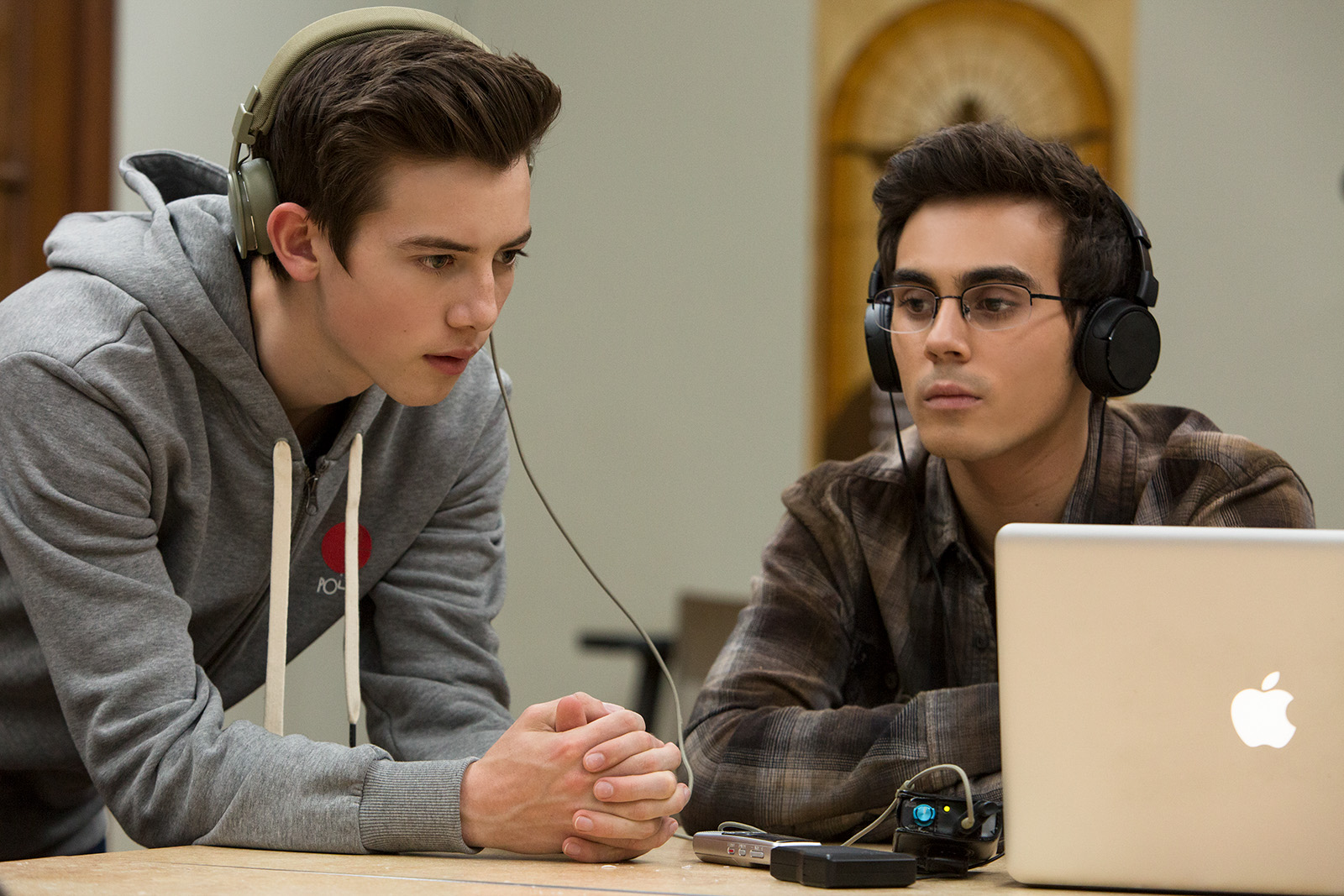TV Review: Season two of ‘American Vandal’ doesn’t stink, commentary accurately depicts teens

(Photo courtesy of Scott Patrick Green/Netflix)

By Kristin Snyder
Sept. 17, 2018 12:19 a.m.
“American Vandal” combines poop jokes with hard-hitting social commentary in an evolution of the phallic joke legacy that is consistent throughout season one.
The second season of the Netflix original series follows amateur detectives Peter (Tyler Alvarez) and Sam (Griffin Gluck) as they leave the mostly wrapped up mystery of Hanover High and travel to St. Bernardine Catholic School in Washington. The private high school has blamed Kevin McClain (Travis Tope) for three poop-related pranks: “the brownout,” “poop pinata” and “shit launcher.”
In many ways, comparisons to season one are unavoidable, with the main premise of “who is the Turd Burglar?” being just as ridiculous a premise as “who drew the dicks?” And though season one thrived because it took itself lightly, season two takes a darker turn in addition to the subtle social commentary that the first season did. The new season more closely resembles the true crime shows the series originally sought to satirize, but the change is welcome nonetheless.
Some of the more sincere aspects of the show come from the personality of the new accused vandal, Kevin, who provides a somber tone his predecessor Dylan Maxwell lacked. Whereas Dylan’s insensitive nature and general thick-headedness made it hard to root for his innocence, Kevin’s clear inability to pick up on social cues makes the supposedly false accusations against him almost heartbreaking. Kevin makes YouTube videos in which he drinks and reviews teas. He unironically wears a pageboy hat and DJs for middle school parties. It’s easy to feel sorry for Kevin.
Though Kevin is the new star, it is the supporting cast of St. Bernardine students – featured mainly in short interview clips – that make the show believable instead of cheesy. Unlike many shows that fail to capture the nuances of the modern teenager, “American Vandal” continues to hit that on the nail. Students have intense opinions on everything from the cafeteria’s chicken fingers to the hot janitor. The wealthy private school students go on missions trips that are more about partying than helping others. But, without any major recurring background characters like in season one, most of the background characters don’t feel as fleshed out and remain largely unremarkable.
But, as with season one, part of what makes “American Vandal” shine is its accurate portrayal of how teenagers use social media. One theory involves the use of periods after emojis to find the perpetrator, a habit Sam wisely observes is “serial-killer weird.” It reflects the use of social media from the original season, which investigated the meaning behind texting “heyy” instead of “hey” and delved through hours of Snapchat videos. But if season one served to merely showcase how integral technology is to teenager’s lives, season two delves deeper into the sinister aspects of that near-constant surveillance. Though Instagram posts and Snapchat stories are still used to uncover clues, they are no longer presented as relatively harmless entities.
Despite featuring many aspects similar to the original season, the new season takes a few episodes to find its groove, partially because the new premise overcomplicates itself. Instead of the straightforward idea of one crime revolving around vandalized cars, there are three separate crimes. The exposition around the premise drags on for two episodes before Peter, the fearless investigative reporter, can get on with sleuthing.
Behind the plethora of poop jokes hides the social commentary that made the first season so remarkable. The new premise rests on the idea that Kevin was forced to confess to a crime he did not commit, leaving viewers questioning the credibility of confessions for more serious crimes. One plot point even revolves around code-switching, exploring how basketball star DeMarcus Tillman (Melvin Gregg) speaks differently around his mostly white classmates, scrutinizing the lack of diversity found in many private high schools. Though apparent, none of the commentary feels forced, and it manages to fit in seamlessly alongside the jokes.
Once again, “American Vandal” continues to inject a ridiculous initial premise with social commentary. And though it has diverged from its satirical origins, the expanded story opens up the door for Peter to potentially continue his investigations beyond both St. Bernardine’s and Hanover High.


